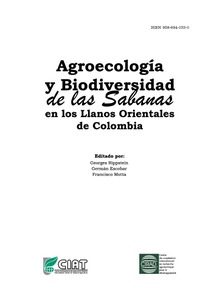Mission
To reduce hunger and poverty, and improve human nutrition in the tropics through research aimed at increasing the eco-efficiency of agriculture.
People
CIAT’s staff includes about 200 scientists. Supported by a wide array of donors, the Center collaborates with hundreds of partners to conduct high-quality research and translate the results into development impact. A Board of Trustees provides oversight of CIAT’s research and financial management.
Values
- Shared organizational ethic
- We respect each other, our partners, and the people who benefit from our work. We act with honesty, integrity, transparency, and environmental responsibility in all of our joint endeavors.
- Learning through partnerships
- We work efficiently and pragmatically together and with partners. Considering our diversity to be a key asset, we adapt readily to change and strive to improve our performance through continuous learning.
- Innovation for impact
- We develop innovative solutions to important challenges in tropical agriculture, resulting in major benefits for the people who support, participate in, and profit from our work.
Members:
Resources
Displaying 471 - 475 of 958Impact of land management on soil macrofauna in the Eastern plains of Colombia
The effects of different types of land management on the soil macroinvertebrate communities on acid soil savannas of Colombia have been assessed using the Tropical Soil Biology and Fertility Program (TSBF) methodology. Invertebrates were identified among broad taxonomic units, TU (Orders or Families), counted and grouped in larger units, i.e., earthworms, termites, ants, beetles, spiders, miriapods, and "other invertebrates".
Earthworms communities in native savannas and man-made pastures of the Eastern plains of Colombia
This was especially due to the presence of a large glossoscolecid anecic species, Martiodrilus carimaguensis Jim\233nez and Moreno, which has been greatly favored by conversion of savanna to pasture. Endogeic species were dominant in the natural savanna whereas the anecic species accounted for the 88% of total earthworm biomass in the pasture. Total earthworm density and biomass were significantly different in the two systems studied (t-test).




